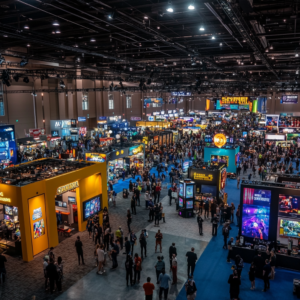
When AI Meets Nobel: The Intersection of Science and Tech Industry
AI is Having Its Nobel Moment: Do Scientists Need the Tech Industry to Sustain It?
It’s official, folks, AI is stepping out of the shadows and walking the red carpet—decked out in a tuxedo lined with Nobel Prize laurels. Yes, the prestigious 2024 Nobel Prizes have made waves by recognizing scientists in the realm of Artificial Intelligence (AI), a bold and unprecedented acknowledgment that leaves us wondering if scientific breakthroughs can truly thrive without the backing of tech giants.
Let’s dive right in.
The Nobel Prizes: A Recognition of AI's Impact
The Royal Swedish Academy of Sciences has scooped up two legends from the tech ether, awarding John Hopfield and Geoffrey Hinton the 2024 Nobel Prize in Physics. These dudes are like the rock stars of machine learning and neural networks. Their work has given rise to innovations stretching from climate models to medical imaging—areas that can literally change the world.
And in a shiny twist of fate for the Nobel Prize in Chemistry, we see the likes of David Baker, Demis Hassabis, and John M. Jumper basking in glory for their extraordinary accomplishments in predicting protein structures using AI. AlphaFold2—Hassabis and Jumper’s brainchild—has emerged as the holy grail of biological research. This ingenious AI framework has literally been a game changer, unlocking the secrets of protein structures that hold the key to advances in modern medicine and technology.
The Role of the Tech Industry
Let’s be real here; the tech industry is the fairy godmother to the scientific community's Cinderella. Giants like Google didn’t just drop a few coins and disappear; they purchased DeepMind and unleashed a torrent of resources into the AI innovation vortex, enabling geniuses like Demis Hassabis and John Jumper to do their thing. This confluence of brilliance is supported by the kind of infrastructure money can buy—powerful hardware, data-rich environments, and the freedom to innovate unchecked.
High-quality research requires high-quality resources, and the tech industry has stepped up to the plate. Just look at AlphaFold2. It’s not merely a product of academic toil; it’s a luxurious dollop of tech industry bounty. Millions of researchers from over 190 countries are using it because, let’s face it, without Google’s backing, this trailblazing achievement wouldn’t have had the necessary firepower to take off.
Resources and Infrastructure
Now, you might wonder, what does making AI really entail? It’s not just about having smart people throw ideas around; it requires an obscene amount of resources. We’re talking top-tier computing power and troves of high-quality data. The tech industry, with its fat wallets and cutting-edge infrastructure, has been the lifeline for advancing AI research.
Take a moment to ponder this: AlphaFold2 is not just a snazzy tool for researchers; it’s been instrumental in crafting intricate biological puzzles. Yet, the development journey wasn’t a leisurely stroll in the park. Without the vast resources from Google, it might have just been another clever idea lingering in obscurity.
Data Quality and Availability
Hold your horses; the rosy picture of AI advancements comes with its own set of clouds. One large conundrum in AI research is the availability of top-notch data. The Protein Data Bank (PDB) has been a mother lode of structured data for AI systems like AlphaFold2. But guess what? Such databases are rarer than a unicorn, and low-quality data is swarming like ants at a picnic.
The tech giants have not only the means but also the obligation to curate and cultivate robust datasets. As the good ol’ saying goes, “garbage in, garbage out.” If the data is trash, the AI output is, well, even trashier.
Concerns and Debates
Let’s not sugarcoat things either—while the presence of these colossal tech companies has accelerated innovation, it comes with its own set of domino effects. There’s gnawing apprehension about heads rolling towards a monopolistic future where the power dynamics skew too heavily in favor of profit-driven entities. Critics are understandably wary; what if this reliance leads to bias, compromised research, and exclusion of small but mighty researchers? Geoffrey Hinton himself has raised the alarm bells on the potential dark alleys that AI could wander if left unchecked.
Human Ingenuity and AI Collaboration
Yet, even as we admire these monumental advancements, the essence of human ingenuity remains irreplaceable in the grand tapestry of scientific discovery. As Demis Hassabis wisely observed, “The human ingenuity comes in first—asking the question, developing the hypothesis.” AI, for all its marvelous capabilities, is not here to replace human brains but to supplement them—a digital assistant, if you will, rather than the starring role.
Future Directions
This fascinating moment of recognition for AI through the Nobel Prizes signals a future where academia and the tech industry are on the same page, shaking hands and boosting each other’s visibility. The future is bright for this partnership as they tackle grand challenges—think neurosymbolic AI, where neural networks meet the elegance of symbolic reasoning. This area could unleash a torrent of breakthroughs, bridging the understanding of AI and human reasoning closer than ever before.
Conclusion
So, let’s wrap it all up. The awarding of the Nobel Prizes to AI researchers shines a spotlight on the profound impact of artificial intelligence on science. The tech industry has done wonders to bolster this progress, but we must cultivate a balanced collaboration that maintains inclusivity and ethical integrity. As we hurtle forward into the future, let’s ensure we tackle the challenges of data quality, ethics, and pursue the irresistible spark of human creativity mixed with AI capabilities.
Want to stay up to date with the latest news on neural networks and automation? Subscribe to our Telegram channel: @channel_neirotoken

